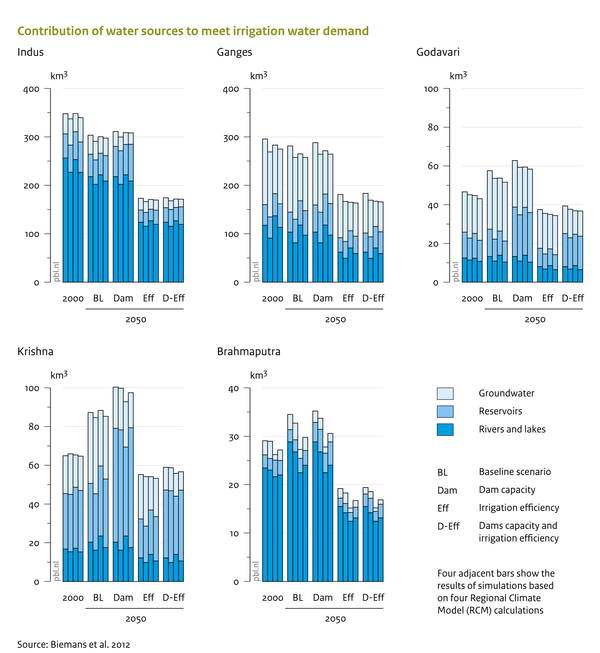Policy intervention figure Water: Difference between revisions
Jump to navigation
Jump to search

m (Text replace - "Hydrological cycle" to "Water") |
Oostenrijr (talk | contribs) m (Oostenrijr moved page Policy intervention figure H to Policy intervention figure Water without leaving a redirect: Text replace - "H" to "Water") |
||
| (One intermediate revision by one other user not shown) | |||
| Line 1: | Line 1: | ||
{{FigureTemplate | {{FigureTemplate | ||
|Figure=085x img13.png | |Figure=085x img13.png | ||
|AltText=Contribution of water sources to | |AltText=Contribution of water sources to meet irrigation water demand | ||
|Caption= | |Caption=Three of the five water basins on the Indian subcontinent strongly rely on groundwater resources to meet irrigation water demand. Doubling the capacity of large dams can increase the amount of irrigation water available in some basins. In all basins, improved irrigation efficiency leads to a significant reduction in water required for irrigation. | ||
|FigureType=Policy intervention figure | |FigureType=Policy intervention figure | ||
|OptimalSize=600 | |OptimalSize=600 | ||
|Component=Water; | |Component=Water; | ||
}} | }} | ||
Latest revision as of 16:31, 24 June 2014

Caption: Three of the five water basins on the Indian subcontinent strongly rely on groundwater resources to meet irrigation water demand. Doubling the capacity of large dams can increase the amount of irrigation water available in some basins. In all basins, improved irrigation efficiency leads to a significant reduction in water required for irrigation.
Figure is used on page(s): Water